#christmas island frigatebird
Text
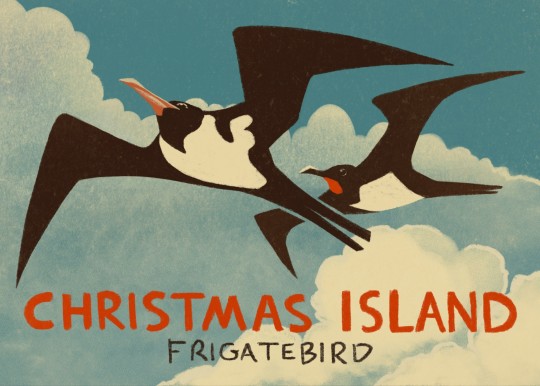
Aimed for vintage postcard as much as I could and this might be my fav
#avianaugust2023#christmas island frigatebird#bird illustration#procreate#artists on tumblr#bird artist#my art
235 notes
·
View notes
Text

Christmas Frigatebird for #avianaugust!
carrd / patreon
337 notes
·
View notes
Text

Day 14 of #avianaugust2023 - Christmas Island Frigatebird
Reference photo was by Shelley Altman
https://macaulaylibrary.org/asset/578223431
32 notes
·
View notes
Text
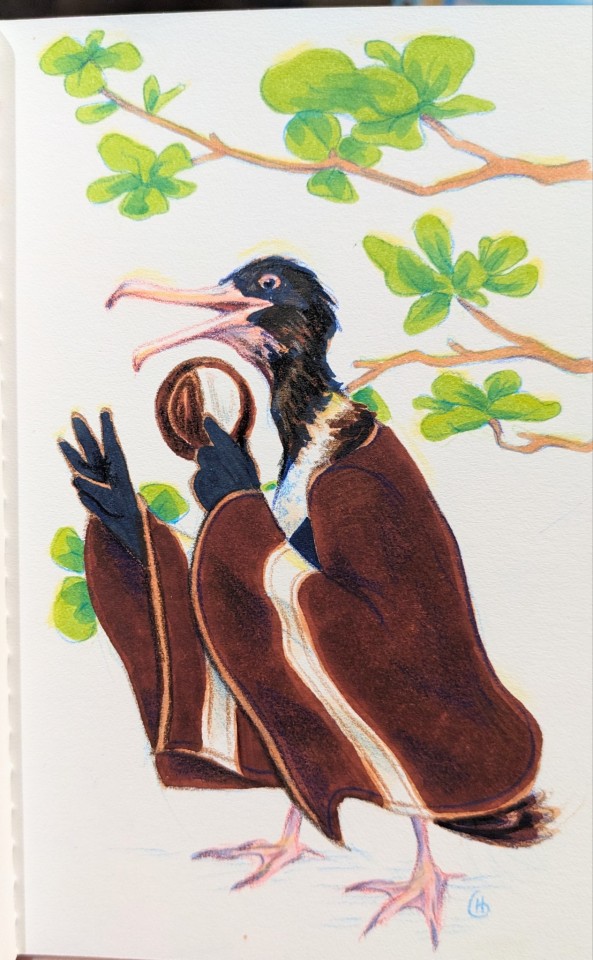
Avian August Day 14 - Christmas Frigatebird with half moon cookie 🌓
#avianaugust2023#avian august#art#birds#christmas island frigatebird#anthro#anthro art#i accidentally made her look like a priest with like sacrament cookie lmao
20 notes
·
View notes
Text
I would like to offer this resource for therians, an extensive list of all of Sir David Attenborough’s nature documentaries that are available on soap2day, and a full list of what species* they each (notably, prominently) feature the natural behaviors of, separated by episode, and omitting species that were only shown dead, juvenile or being predated on. This took me a while (I have been working on it since Prehistoric Planet’s release) because I did in fact have to watch every single series in full in order to list all the species and the episodes are around 50 minutes long, but enjoy.
Long post ahead:
Most of these shows have closed captioning, which is why I’ve picked soap2day. Planet Earth is the only one that doesn’t. I did not include Dynasties and Dynasties II because each episode only features one species.
Thank you to Birch (@ambiguousmutt) for his help (he watched about half of the episodes) so I didn’t have to do it individually. Credit goes to him as well.
*Sometimes Attenborough doesn’t say the specific species and I was too busy trying to get through the episodes to identify it. In those cases I just put the most specific name I could.
Planet Earth
Episode one (From Pole to Pole): emperor penguin, polar bear, caribou, arctic grey wolf, Amur leopard, six-plumed bird-of-paradise, superb bird-of-paradise, great white shark, African elephant, African buffalo, lechwe, baboon, African wild dog
Episode two (Mountains): gelada, walia ibex, Ethiopian wolf, guanaco, cougar, grizzly bear, markhor, snow leopard, golden eagle, grey wolf, panda, golden snub-nosed monkey, red panda, demoiselle crane
Episode three (Fresh Water): giant salamander, grizzly bear, smooth-coated otter, Nile crocodile, dolphin fish, midge, Amazon river dolphin, dorado, piranha, spectacled caiman, crab-eating macaque, snow goose
Episode four (Caves): wrinkle-lipped free-tailed bat, cockroach, bat hawk, cave swiftlet, yellow-red rat snake, Texas blind salamander
Episode five (Deserts): Bactrian camel, dromedary camel, red kangaroo, fennec fox, guanaco, long-nosed bat, Nubian ibex, flat lizard, lion, African elephant, locust
Episode six (Ice Worlds): snow petrel, Antarctic petrel, south polar skua, humpback whale, emperor penguin, eider, muskox, arctic grey wolf, polar bear, little auk, arctic fox
Episode seven (Great Plains): Mongolian gazelle, red-billed quelea, wildebeest, snow goose, arctic fox, arctic grey wolf, bison, wild ass, Tibetan fox, pygmy hog, African elephant, lion, baboon
Episode eight (Jungles): magnificent bird-of-paradise, spider monkey, howler monkey, siamang gibbon, gliding tree frog, colugo, red crab spider, African elephant, chimpanzee
Episode nine (The Shallow Seas): humpback whale, multiple corals, banded sea krait, trevally, dugong, bottlenose dolphin, Socotra cormorant, salp, comb jelly, sea lion, dusky dolphin, sea urchin, sunflower starfish, short-tailed stingray, great white shark, king penguin, fur seal
Episode ten (Seasonal Forests): Eurasian lynx, moose, crossbill, wolverine, western capercaillie, pine marten, great grey owl, pudu, kodkod, mandarin duck, cicada, red deer, Amur leopard, tiger, mouse lemur
Episode eleven (Ocean Deep): whale shark, oceanic whitetip shark, common dolphin, Cory's shearwater, manta ray, sea spider, vampire squid, spider crab, unnamed deep sea eel, giant isopod, chambered nautilus, Pacific spotted dolphin, mola mola, frigatebird, sailfish, blue whale
Planet Earth II
Episode one (Islands): pygmy three-toed sloth, Komodo dragon, sifaka, marine iguana, Galapagos racer, Buller's albatross, fairy tern, Christmas Island red crab, yellow crazy ant, chinstrap penguin
Episode two (Mountains): Nubian ibex, red fox, golden eagle, grizzly bear, bobcat, flamingo, mountain viscacha rat, snow leopard
Episode three (Jungles): spider monkey, flying lizard, sword-billed hummingbird, river dolphin, jaguar, glass frog, paper wasp, click beetle, red bird of paradise, Wilson's bird of paradise, indri
Episode four (Deserts): lion, Harris's hawk, shrike, locust, sand grouse, pale chanting goshawk, feral mustang, golden mole, desert long-eared bat, darkling beetle, Namaqua chameleon
Episode five (Grasslands): saiga antelope, lion, harvest mouse, carmine bee-eater, Kori bustard, African elephant, serval, Jackson's widowbird, grasscutter ant, compass termite, giant anteater, bison, red fox, arctic grey wolf
Episode six (Cities): langur, peregrine falcon, leopard, European starling, great bowerbird, raccoon, rhesus macaque, spotted hyena, wels catfish
Our Planet
Episode one (One Planet): lesser flamingo, orchid bee, golden-collared manakin, red-capped manakin, blue manakin, cormorant, booby, common dolphin, shearwater, African wild dog, timber wolf
Episode two (Frozen Worlds): gentoo penguin, wandering albatross, narwhal, Pacific walrus, humpback whale, orca, leopard seal, polar bear
Episode three (Jungles): lowland gorilla, forest elephant, black sicklebill, twelve-wired bird-of-paradise, western parotia, mountain treeshrew, Philippine eagle, black spider monkey, leafcutter ant, Sumatra orangutan, velvet worm
Episode four (Coastal Seas): northern fur seal, compass jellyfish, giant trevally, mobula ray, Atlantic stingray, bottlenose dolphin, grey reef shark, whitetip reef shark, sea otter, California sheephead wrasse, Steller's sea lion, bald eagle, humpback whale, Guanay cormorant, Inca tern, Peruvian booby, South American sea lion
Episode five (From Deserts to Grasslands): Socotran cormorant, Arabian leopard, Arabian oryx, African elephant, cheetah, bison, Alcon blue butterfly, saiga, Przewalski's wild horse, tiger
Episode six (The High Seas): blue whale, spinner dolphin, mobula ray, oarfish, anglerfish, bristle worm, giant petrel, black-browed albatross, wandering albatross, bluefin tuna, sea lion, humpback whale
Episode seven (Fresh Water): Australian pelican, torrent duck, grizzly bear, manatee, giant mayfly, common kingfisher, osprey, jaguar, callipterus cichlid, Siamese fighting fish, hippopotamus, lion, African elephant, sandhill crane
Episode eight (Forests): Siberian tiger, bald eagle, rough-skinned newt, great hornbill, African elephant, African wild dog, fossa, gray mouse lemur
A Perfect Planet
Episode one (Volcano): lesser flamingo, marabou stork, Galápagos land iguana, vampire ground finch, Aldabra giant tortoise, North American river otter, coyote, Kamchatka brown bear, wildebeest
Episode two (The Sun): yellow-cheeked gibbon, fig wasp, arctic grey wolf, wood frog, garter snake, arctic fox, Saharan silver ant, golden snub-nosed monkey, sooty shearwater, humpback whales
Episode three (Weather): straw-colored fruit bat, fire ant, Amazonian giant river turtle, desert rain frog, Bactrian camel, Christmas Island red crab, carmine bee-eater, Nile crocodile, African fish eagle, hippopotamus
Episode four (Oceans): common dolphin, marine iguana, flightless cormorant, flamboyant cuttlefish, eider, bottlenose dolphin, lemon shark, manta ray, blacktip reef shark, trevally, rockhopper pengin, Eden's whale
Episode five (Humans): none
Life
Episode one (Challenges of Life): bottlenose dolphins, cheetah, panther chameleon, orca, brown-tufted capuchin, stalk-eyed fly, hippopotamus, Clark's grebe, giant Pacific octopus, strawberry poison-dart frog, leopard seal, orangutan
Episode two (Reptiles and Amphibians): pebble toad, caiman, basilisk, Brazilian pygmy gecko, panther chameleon, Namaqua chameleon, red-sided garter snake, collared iguana, hog-nosed snake, horned lizard, sea krait, African bullfrog, Komodo dragon
Episode three (Mammals): Weddell seal, elephant shrew, aye-aye, caribou, straw-colored fruit bat, lion, spotted hyena, polar bear, brown-nosed coati, meerkat, African elephant, humpback whale
Episode four (Fish): sailfish, flying fish, weedy sea dragon, convict fish, sarcastic fringehead, mudskipper, Hawaiian freshwater goby, hippopotamus, barbel, silvertip shark, clownfish, sea lion, ragged tooth shark, multiple snapper, whale shark
Episode five (Birds): spatuletail hummingbird, lammergeier, red-billed tropicbird, magnificent frigatebird, red knot, horseshoe crab, lesser flamingo, chinstrap penguin, great white pelican, Clark’s grebe, sage grouse, Vogelkop bowerbird
Episode six (Insects): Darwin’s beetle, unnamed damselfly, monarch butterfly, alkali fly, Wilson’s phalarope, oogpister beetle, mongoose, bombardier beetle, honey bee, black bear, Japanese red bug, Dawson’s bee, grass cutter ant
Episode seven (Hunters and Hunted): ibex, short-tailed stoat, brown bear, Ethiopian wolf, California ground squirrel, star-nosed mole, cheetah, red fox, greater bulldog bat, bottlenose dolphin, Bengal tiger, rattlesnake, orca
Episode eight (Creatures of the Deep): Pompeii worm, Humboldt squid, nemertean worm, moon jelly, fried egg jellyfish, spider crab, stingray, cuttlefish, giant Pacific octopus, sunflower sea star, king crab, cleaner shrimp
Episode nine (Plants): monarch butterfly, purple-throated carib hummingbird
Episode ten (Primates): Hamadryas baboon, Japanese macaque, lowland gorilla, spectral tarsier, phayre's leaf monkey, ring-tailed lemur, Sumatra orangutan, chacma baboon, white-faced capuchin, brown-tufted capuchin, western chimpanzee
Blue Planet II
Episode one (One Ocean): bottlenose dolphin, tuskfish, tern, giant trevally, mobula ray, false killer whale, Asian sheepshead wrasse, orca, humpback whale, walrus
Episode two (The Deep): sea toad, Venus’ flower basket, unnamed shrimp, ethereal snailfish, cock-eyed squid, pyrosome, barrel-eyed fish, unnamed siphonophore, yeti crab, Humboldt squid, fangtooth fish, sixgill shark, scabbardfish, zombie worm
Episode three (Coral Reefs): broadclub cuttlefish, coral grouper, day octopus, multiple corals, green turtle, bottlenose dolphin, manta ray, bobbit worm, saddleback clownfish, marbled grouper, grey reef shark
Episode four (Big Blue): spinner dolphin, yellowfin tuna, mobula ray, sailfish, sperm whale, sea turtle, blue shark, great white shark, multiple jellyfish, Portuguese man o' war, whale shark, wandering albatross, shortfin pilot whale
Episode five (Green Seas): Garibaldi, Australian giant cuttlefish, weedy seadragon, common octopus, pyjama shark, sea otter, tiger shark, smooth stingray, zebra mantis shrimp, common dolphin, humpback whale
Episode six (Coasts): Pacific leaping blenny, king penguin, southern elephant seal, Sally Lightfoot crab, Galápagos sea lion, ochre starfish, clingfish, chain moray eel, Atlantic puffin, arctic skua
Episode seven (Our Blue Planet): none
Prehistoric Planet
Episode one (Coasts): Tyrannosaurus rex, Tethydraco, Phosphatodraco, Tuarangisaurus, Mosasaurus hoffmannii, pycnodont fish, ammonites, Kaikaifilu
Episode two (Deserts): Dreadnoughtus, Tarbosaurus, Velociraptor, Mononykus, Barbaridactylus, Secernosaurus
Episode three (Freshwater): Velociraptor, Tyrannosaurus rex, Deinocheirus, Quetzalcoatlus, Masiakasaurus, Beelzebufo, elasmosaur
Episode four (Ice Worlds): dromaeosaur, hadrosaur, Ornithomimus, Olorotitan, troodontid, Antarctopelta, Pachyrhinosaurus, Nanuqsaurus
Episode five (Forests): Austroposeidon, Triceratops, Carnotaurus, Qianzhousaurus, Edmontosaurus, Atrociraptor, Anodontosaurus, Therizinosaurus, Telmatosaurus, Hatzegopteryx
The Hunt
Episode one (The Hardest Challenge): African leopard, African wild dog, Parson’s chameleon, nose-horned chameleon, African mantis, Darwin’s bark spider, Nile crocodile, Amur falcon, orca, cheetah
Episode two (Arctic): polar bear, arctic grey wolf, arctic fox, glaucous gull
Episode three (Forests): tiger, American marten, sparrow hawk, Portia spider, tarsier, harpy eagle, chimpanzee, army ant
Episode four (Oceans): blue whale, frigatebird, dorado, sargassum fish, spinner dolphin, Beroe ovata, Chiroteuthis, lionfish, black-browed albatross, sea lion, tuna, copper shark, common dolphin, Bryde's whale
Episode five (Plains): cheetah, caracal, honey badger, termite, bald eagle, lion, Ethiopian wolf, hotrod ant, spoor spider
Episode six (Coasts): bottlenose dolphin, algae octopus, sand bubbler crab, long-tailed macaque, marine otter, grizzly bear, grey wolf, peregrine falcon, orca, humpback whale
Episode seven (Conservation): none
Life In Colour
Episode one (Seeing In Color): Indian peafowl, mandrill, Costa’s hummingbird, magnificent bird-of-paradise, blue moon butterfly, fiddler crab, mantis shrimp, flamingo, poison dart frog
Episode two (Hiding In Color): Bengal tiger, langur, ptarmigan, crab spider, zebra, Cuban painted snail, blue-striped fangblenny, common waxbill, pin-tailed wydah, Augrabies flat lizard
Frozen Planet II
Episode one (Frozen Worlds): emperor penguin, orca, Pallas’s cat, Siberian tiger, grizzly bear, hooded seal, polar bear
Episode two (Frozen Ocean): polar bear, beluga, harp seal, skeleton shrimp, crested auklet, orca
Episode three (Frozen Peaks): high-casqued chameleon, japanese macaque, kea, andean flamingo, giant panda, golden eagle, andean mountain lion
Episode four (Frozen South): king penguin, Antipodean wandering albatross, blue whale, Weddell seal, chinstrap penguin, snow petrel, leopard seal, orca
Episode five (Frozen Lands): grey wolf, arctic fox, Amur leopard, Siberian tiger, painted turtl, Lapland bumblebee, snowy owl, caribou, grizzly bear
Episode six (Our Frozen Planet): none
Africa
Episode one (Kalahari): fork-tailed drongo, ostrich, black rhinoceros, Angolan giraffe, African leopard, armored ground cricket, spider wasp
Episode two (Savannah): Agama lizard, shoebill, bee-eaters and rollers, lesser flamingo, African elephant, crowned eagle, African fish eagle, martial eagle
Episode three (Congo): chimpanzee, central African rock python, Angola banana frog, African skimmer, rockfowl, African elephant
Episode four (Cape): emperor swallowtail, giant kingfish, African penguin, monkey beetle, springbok, yellow-billed kite, pied crow, ghost crab, vundu catfish, Nile crocodile, Bryde’s whale, great white shark, common dolphin
Episode five (Sahara): Grevy’s zebra, naked mole rat, barn swallow, Dromedary camel, dung beetle, crocodile, western yellow wagtail, Saharan silver ant
Episode six (The Future): none
521 notes
·
View notes
Text

A Christmas frigatebird (Fregata andrewsi) from Christmas Island in the Indian Ocean // for #AvianAugust2023
130 notes
·
View notes
Text
damn i love frigatebirds!!! they have such cool silhouettes, with their long wings and forked tails, and they have an exquisite glossy sheen on their back feathers....give my compliments to evolution, she really knows how to make a good bird
they have reputations for being pirates, and are very agile considering their size! however food stealing is only a supplement and doesn't usually form a large part of their diet. they have a particular taste for flying fish!
frigates also sleep on the wing and can also go up to 4000 ft high if need be which i think is insane! raising a chick takes so long that they mostly just breed every other year. also two species, christmas island and ascension island frigatebirds, only breed on one small island each - those two species are also endangered :((
#contact call#saw a stupid youtube comment a while back calling them evil and i'm still mad about it so i made this post lol#i am the world's biggest defender of hated seabirds (gulls / skuas / frigatebirds / giant petrels)
1 note
·
View note
Text
Planet's rarest birds at higher risk of extinction
https://sciencespies.com/environment/planets-rarest-birds-at-higher-risk-of-extinction/
Planet's rarest birds at higher risk of extinction
A new study finds that bird species with extreme or uncommon combinations of traits face the highest risk of extinction. The findings are published in the British Ecological Society journal Functional Ecology.
A new study led by researchers at Imperial College London finds that the most unique birds on the planet are also the most threatened. Losing these species and the unique roles they play in the environment, such as seed dispersal, pollination and predation, could have severe consequences to the functioning of ecosystems.
The study analysed the extinction risk and physical attributes (such as beak shape and wing length) of 99% of all living bird species, making it the most comprehensive study of its kind to date.
The researchers found that in simulated scenarios in which all threatened and near-threatened bird species became extinct, there would be a significantly greater reduction in the physical (or morphological) diversity among birds than in scenarios where extinctions were random.
Bird species that are both morphologically unique and threatened include the Christmas Frigatebird (Fregata andrewsi), which nests only on Christmas Island, and the Bristle-thighed Curlew (Numenius tahitiensis), which migrates from its breeding grounds in Alaska to South Pacific islands every year.
Jarome Ali, a PhD candidate at Princeton University who completed the research at Imperial College London and was the lead author of the research, said: “Our study shows that extinctions will most likely prune a large proportion of unique species from the avian tree. Losing these unique species will mean a loss of the specialised roles that they play in ecosystems.
“If we do not take action to protect threatened species and avert extinctions, the functioning of ecosystems will be dramatically disrupted.”
In the study, the authors used a dataset of measurements collected from living birds and museum specimens, totalling 9943 bird species. The measurements included physical traits like beak size and shape, and the length of wings, tails and legs.
The authors combined the morphological data with extinction risk, based on each species’ current threat status on the IUCN Red List. They then ran simulations on what would happen if the most threatened birds were to go extinct.
Although the dataset used in the study was able to show that the most unique birds were also classified as threatened on the Red List, it was unable to show what links uniqueness in birds to extinction risk.
Jarome Ali said: “One possibility is that highly specialised organisms are less able to adapt to a changing environment, in which case human impacts may directly threaten species with the most unusual ecological roles. More research is needed to delve deeper into the connection between unique traits and extinction risk.”
Story Source:
Materials provided by British Ecological Society. Note: Content may be edited for style and length.
#Environment
0 notes
Photo

Christmas Island Frigatebird
Fregata andrewsi
#frigatebird#christmas island frigatebird#bird#aves#ornithology#suliformes#fregatidae#fregata#fregata andrewsi#feathers#wildlife#wildlife photography#nature#animalia#animal#animal photography#beak#endangered#endangered species#endangered wildlife#critically endangered
21 notes
·
View notes
Photo

Christmas Island Frigatebird (Fregata andrewsi) - photo by Prayitno Goentaro
Listed as critically endangered by the IUCN.
#birds#suliformes#fregatidae#frigatebirds#christmas island frigatebird#series: critically endangered birds
87 notes
·
View notes
Photo
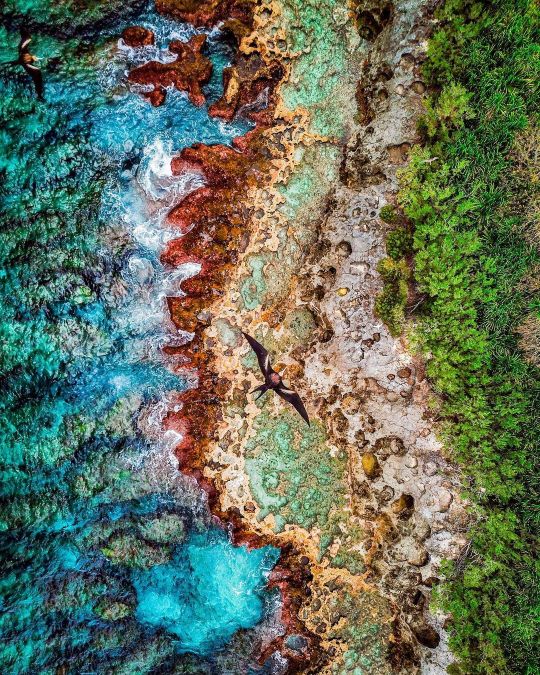
In honour of a mate of mine who is going to the IOT for her first time today, here is a blast from the past. A couple of frigate cruising the skies at Christmas Island. Have fun on the rock @mantarayjane4 . . @australia @christmasisland . . #bluecrustproductions #adventuresofbluecrust #Christmasisland #Frigatebird #spearfishing #christmasisland #birdofparadiseisland #redbilledtropicbird #islandhopping #tropicalbirds #birding #magnificentfrigatebird #nature #birds #bird #frigate #Islandlife #photooftheday #greece #love #vacation #sunset #ocean #instagood #summer #beautifuldestinations #hawaii #islandgirl #explore #adventure (at Christmas Island) https://www.instagram.com/p/CIzpfiUDNee/?igshid=9hfbs7pnmwuu
#bluecrustproductions#adventuresofbluecrust#christmasisland#frigatebird#spearfishing#birdofparadiseisland#redbilledtropicbird#islandhopping#tropicalbirds#birding#magnificentfrigatebird#nature#birds#bird#frigate#islandlife#photooftheday#greece#love#vacation#sunset#ocean#instagood#summer#beautifuldestinations#hawaii#islandgirl#explore#adventure
3 notes
·
View notes
Text
ആസ്ട്രേലിയയിലെ “ക്രിസ്തുമസ് ഐലന്റ്” വീണ്ടും തുറക്കുമെന്ന് പ്രധാനമന്ത്രി സ്കോട്ട് മോറിസ്
ആസ്ട്രേലിയയിലെ “ക്രിസ്തുമസ് ഐലന്റ്” വീണ്ടും തുറക്കുമെന്ന് പ്രധാനമന്ത്രി സ്കോട്ട് മോറിസ്
ആസ്ട്രേലിയയിലെ “ക്രിസ്തുമസ് ഐലന്റ്” വീണ്ടും തുറക്കുമെന്ന് പ്രധാനമന്ത്രി സ്കോട്ട് മോറിസ്
ആസ്ട്രേലിയന് പാര്ലിമെന്റില് ദയനീയ പരാജയമേറ്റ് വാങ്ങിയ വിഷയമാണ് “ക്രിസ്തുമസ് ഐലന്റ്” സംബന്ധമായ ശബ്ദ കോലാഹലങ്ങളും മറ്റും. ഇപ്പോള് ഇതാ വീണ്ടും ഏറെ വിവാദം സൃഷ്ടിച്ച “ക്രിസ്തുമസ് ഐലന്റ്” വീണ്ടും തുറക്കുമെന്ന് പ്രധാനമന്ത്രി സ്കോട്ട് മോറിസ് പ്രഖ്യാപിക്കുകയാണ്. കഴിഞ്ഞ ചൊവാഴ്ച പ്രതിപക്ഷത്തിരിക്കുന്ന എം. പി…
View On WordPress
#christmas island national park#christmas island religion#christmas island refugees#christmas island time#christmas island crabs#christmas island frigatebird#christmas island australia#christmas island australia map#christmas island australia refugees#christmas island accommodation#christmas island airport#christmas island map#christmas island people
0 notes
Text
SOME BEAUTIFUL FLAGS - OF PACIFIC OCEAN NATIONS

KIRIBATI is in the central Pacific Ocean. Parts of the country (for instance Kiritimati - Christmas Island) are +14 hours GMT, and the first places on earth to receive the day’s sunrise. The country’s islands are north and south of the equator. The bird is a frigatebird.
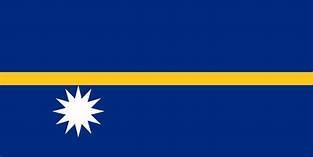
NAURU is a single island nation, and one of the smallest in the world, just 21 sq.km. It is also remote, 300 kilometres from anywhere else. The blue colour on the flag represents the Pacific Ocean and the gold stripe the equator: the star represents Nauru. Nauru is one degree south of the equator.

PALAU has a population of about 21,000, and is made up of over 340 islands, situated between the Philippines and the island of New Guinea. The blue of the Paluan flag represents the Pacific Ocean. The yellow disc represents the full moon, a time of celebration in Palau, and is off-centre.
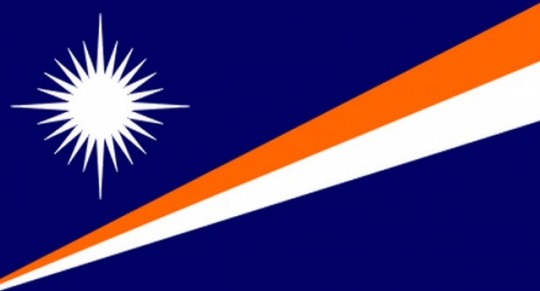
The MARSHALL ISLANDS flag, like the Nauru flag, represents it’s nation’s geographical position. The diagonal lines represent the equator - the star represents the Marshall Islands, which range around 9 degrees North. The flag was designed by the nation’s first First Lady, Emlain Kabua.
10 notes
·
View notes
Text
FRIGATEBIRD
Another wet morning but no flooding here thankfully, unlike the sunshine state, aka, Queensland.
This weeks extreme creature is the Christmas Island Frigatebird, heard of it, no, me either.
The Christmas frigatebird, or Christmas Island frigatebird, is a seabird of the frigatebird family Fregatidae which is an endemic breeder to Christmas Island in the Indian Ocean. The Christmas frigatebird is…

View On WordPress
0 notes
Text

Day 358, doodle 358: Christmas Island Frigatebird
0 notes
Text
Christmas Island Frigatebird Diet
Christmas Island Frigatebird Diet
TITLE_IMG1 By IMG_SRC1
Resolution: IMG_RES1
Size: IMG_SIZE1
Another Picture of christmas island frigatebird diet:
Using IMG shortcode
TITLE_IMG2
OR
[gallery orderby="rand" size="medium" columns="4" link="post"]
0 notes